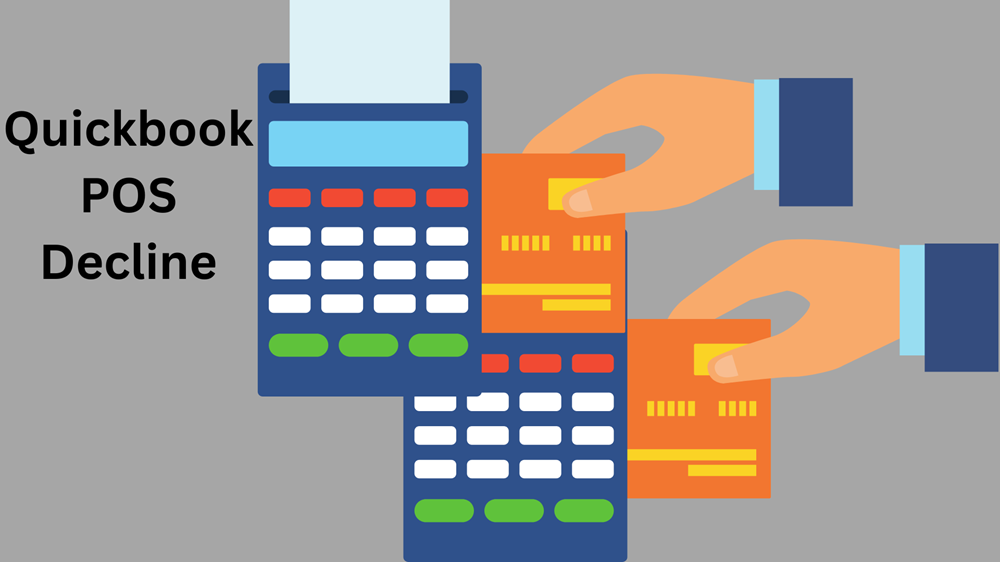In the world of accounting and bookkeeping, QuickBooks stands as a stalwart companion for over 10 million small business owners across the USA. With continuous enhancements and updates orchestrated by its creator, Intuit, QuickBooks remains at the forefront of productivity. Users are encouraged to embrace the latest software version, ensuring their experience is optimized through regular updates.
Even the most sophisticated software can exhibit occasional eccentricities. QuickBooks is no exception. Users, however, need not fret when faced with such instances. With uncomplicated troubleshooting strategies, these hiccups can be resolved, empowering users to harness QuickBooks’ full potential.
Decoding QuickBooks Error 1603
QuickBooks Error 1603 often rears its head during the initial installation phase, predominantly among first-time QuickBooks users. Classified as an installation error, its emergence is often attributed to damaged Windows components or the presence of background processes during installation. This error can crop up due to outdated or compromised Windows components such as .NET framework, C++, or Microsoft MSXML. It’s worth noting that this error might give rise to related issues like QuickBooks error 1903, QuickBooks error 1722, and QuickBooks error 1935 during installation.
Error Messages that Surface
If you come across QuickBooks error 1603 while trying to install the software, you might encounter error messages like:
- “Error Status 1603: The installation process encountered an internal error.”
- “Error Status 1603: Unable to apply the update.”
- “MSI returned 1603: Fatal error occurred during the installation.
Additionally, a window may display messages such as:
- “Installation Error 1603: An issue occurred while installing Microsoft .NET Framework.”
- “Installation Error 1642: Problem encountered while installing Microsoft .NET Framework during QuickBooks installation.”
Understanding the Culprits of QuickBooks Error Code 1603
In the intricate world of software intricacies, QuickBooks Error Code 1603 can emerge as a puzzling obstacle. Let’s delve into the underlying causes of this error, shedding light on what lies beneath.
- Infected or corrupt installer file – Sometimes, the culprit behind Error Code 1603 is an installer file compromised by infection or corruption. Malicious entities can hamper smooth installation.
- Incompletely Downloaded Microsoft Installer File – A Microsoft installer file that wasn’t completely downloaded can lead to this error. The integrity of the installation process hinges on a fully downloaded file.
- Power surges or failures – A sudden power surge or failure during installation can disrupt the process and trigger Error Code 1603, causing installation inconsistencies.
- Faulty hard drive – A faulty hard drive can hinder the seamless installation of QuickBooks, leading to the manifestation of this error code.
- Virus or malware infection – The presence of viruses or malware on your system can impede the installation of software, including QuickBooks, resulting in error occurrences.
- Windows security policies – In some instances, stringent Windows security policies, particularly on Windows servers, can create barriers to installation, giving rise to Error Code 1603.
- Missing, damaged, or outdated windows components – The absence, damage, or obsolescence of essential Windows components like .NET framework, C++, or Microsoft MSXML can contribute to this error.
- Unsupported or outdated windows version – Using an unsupported or outdated version of Windows can clash with the installation requirements of QuickBooks, potentially triggering Error Code 1603.
Simple Solutions for QuickBooks Error Code 1603
Encountering QuickBooks Error Code 1603 can be perplexing, but fear not. We present you with user-friendly solutions that will get you back on track in no time.
Solution 1 – Employ the QuickBooks tool hub and run the install diagnostic tool
Step 1 – Download and install the QuickBooks tool hub
When in doubt, turn to the QuickBooks Tool Hub, a versatile program designed to tackle various QuickBooks desktop issues. Follow these steps for a seamless download and installation:
- Close QuickBooks to initiate the process.
- Download the latest QuickBooks Tool Hub version (1.6.0.3).
- Locate the downloaded file (QuickBooksToolHub.exe) in your downloads folder and open it.
- Follow the installation instructions diligently.
- Once installed, double-click the tool hub icon to launch it.
Step 2 – Utilize the QuickBooks Install Diagnostic Tool
- Open the QuickBooks Tool Hub.
- Navigate to “Installation Issues.”
- Click on “QuickBooks Install Diagnostic Tool” and let it analyze the installation. This might take up to 20 minutes.
- Once the analysis is complete, reboot your computer.
Solution 2 – Keep Windows Up to Date
Updating Windows 11
- Press the Windows key on your keyboard.
- Go to Settings >> Windows Update.
- Click on “Check for Updates.” Here, you’ll also find your update history and newly available updates.
Updating Windows 10, 8.1, or 8
- Press the Windows key.
- Navigate to Settings >> Windows Update & Security.
- Click on “Check for Updates.”
Updating Windows 7
- Click on the Start button.
- Go to Control Panel >> System & Security >> Windows Updates.
- Click on “Check for Updates.”
Solution 3 – Manual repair of windows components
Damaged MSXML can be a root cause for various QuickBooks desktop issues. If the QuickBooks Tool Hub doesn’t resolve it, consider repairing MSXML manually:
For 64-Bit Operating System –
- Run Command Prompt as Administrator.
- Navigate to C:\windows\syswow64 using the “cd” command.
- Enter “regsvr32 MSXML6.dll” and press Enter.
For 32-Bit Operating System –
- Run Command Prompt as Administrator.
- Type “cmd” and press Enter.
- Enter “regsvr32 MSXML6.dll” and press Enter.
Manually Fixing Microsoft .NET Framework –
Method 1
- Open Control Panel and access Programs and Features.
- Click on “Windows Features.”
- Locate the .NET version and double-click it.
- Check .NET Framework 3.5.1 & 4.5 if not already checked.
- Click “Uninstall a Program.”
- Choose Repair and then restart your computer.
- Recheck .NET Framework 3.5.1 & 4.5 options.
- Restart your computer again.
Method 2 (For Windows 10 and Newer Versions)
- Close all open programs.
- Open the Windows Start menu and search for “Control Panel.”
- Access Programs and Features.
- Select “Uninstall a Program.”
- Choose “Turn Windows features on or off.”
- Locate .NET Framework on the list.
- Adjust settings for .NET Framework 4.5 (or later) and .NET Framework 3.5 SP1 as needed.
- Restart your computer.
Solution 4 – Navigating selective startup for QuickBooks installation
Step 1 – Enable selective startup
- Press Windows+R on your keyboard to open the Run command.
- Enter “msconfig” and select OK.
- In the General tab, choose “Selective startup” and “Load system services.”
- Proceed to the Services tab and click “Hide all Microsoft Services.”
- Click “Disable all,” then uncheck “Hide all Microsoft services.”
- Locate “Windows Installer” in the list of services and select it.
- Confirm your changes by selecting OK.
- On the System Configuration window, initiate a restart.
Step 2 – Install QuickBooks desktop
- Begin by installing QuickBooks Desktop.
- Press Windows+R on your keyboard to open the Run command.
- Type “msconfig” and select OK.
- In the General tab, opt for “Normal startup.”
- Confirm your choice by selecting OK.
- On the System Configuration window, restart your system.
You May Read Also: How to Resolve QuickBooks Error 1014?
By following these comprehensive steps, you can effortlessly troubleshoot QuickBooks Error Code 1603. Embrace these solutions with confidence, knowing that you have the tools to regain control over your software experience. Remember, challenges are just opportunities to demonstrate your software management prowess.
Navigating the intricate landscape of software installation can occasionally lead us to uncharted territories, where QuickBooks Error 1603 might surface unexpectedly. However, armed with the insights and solutions provided in this guide, you’re well-equipped to tackle this challenge head-on.
Frequently Asked Questions




